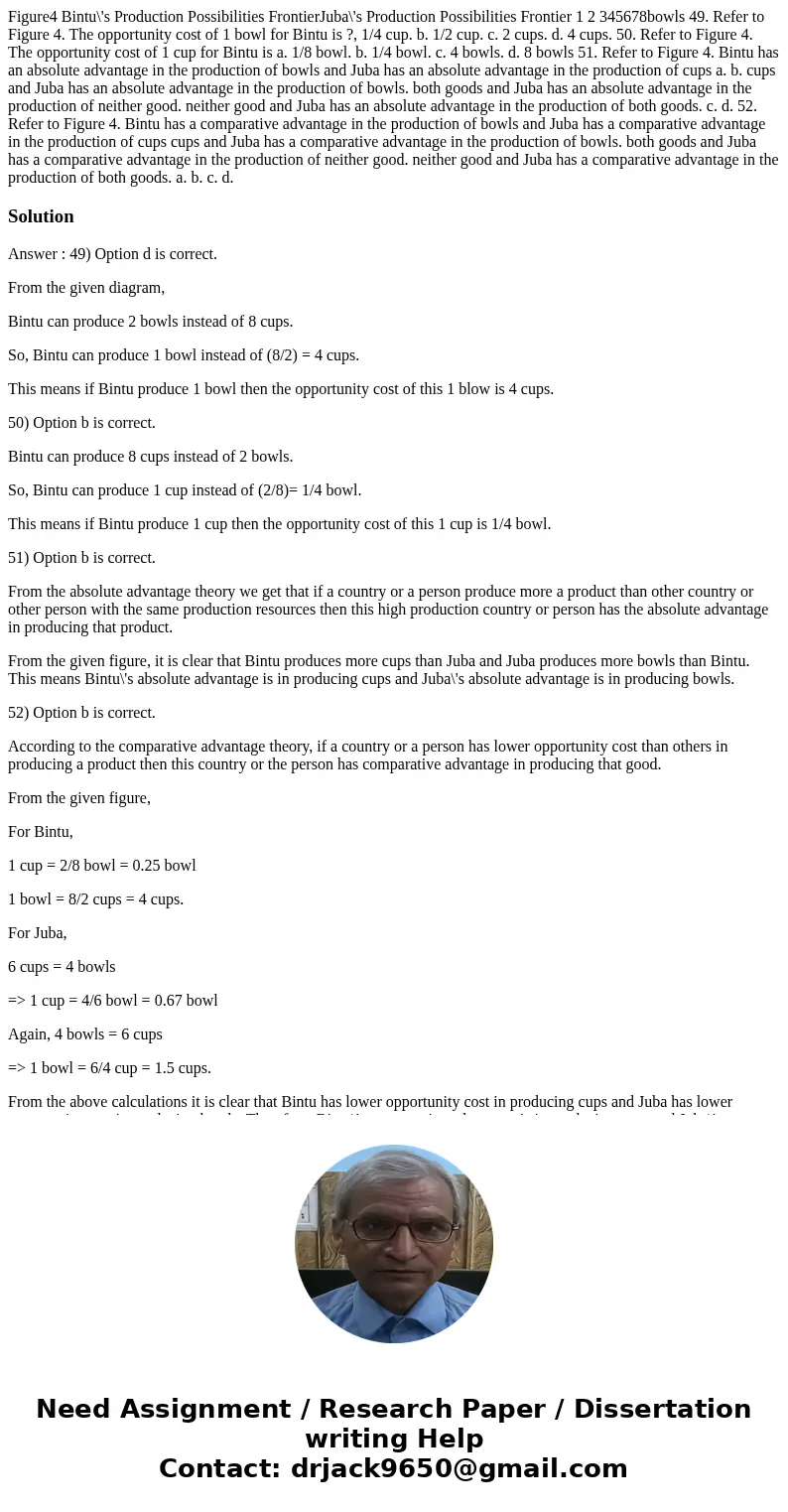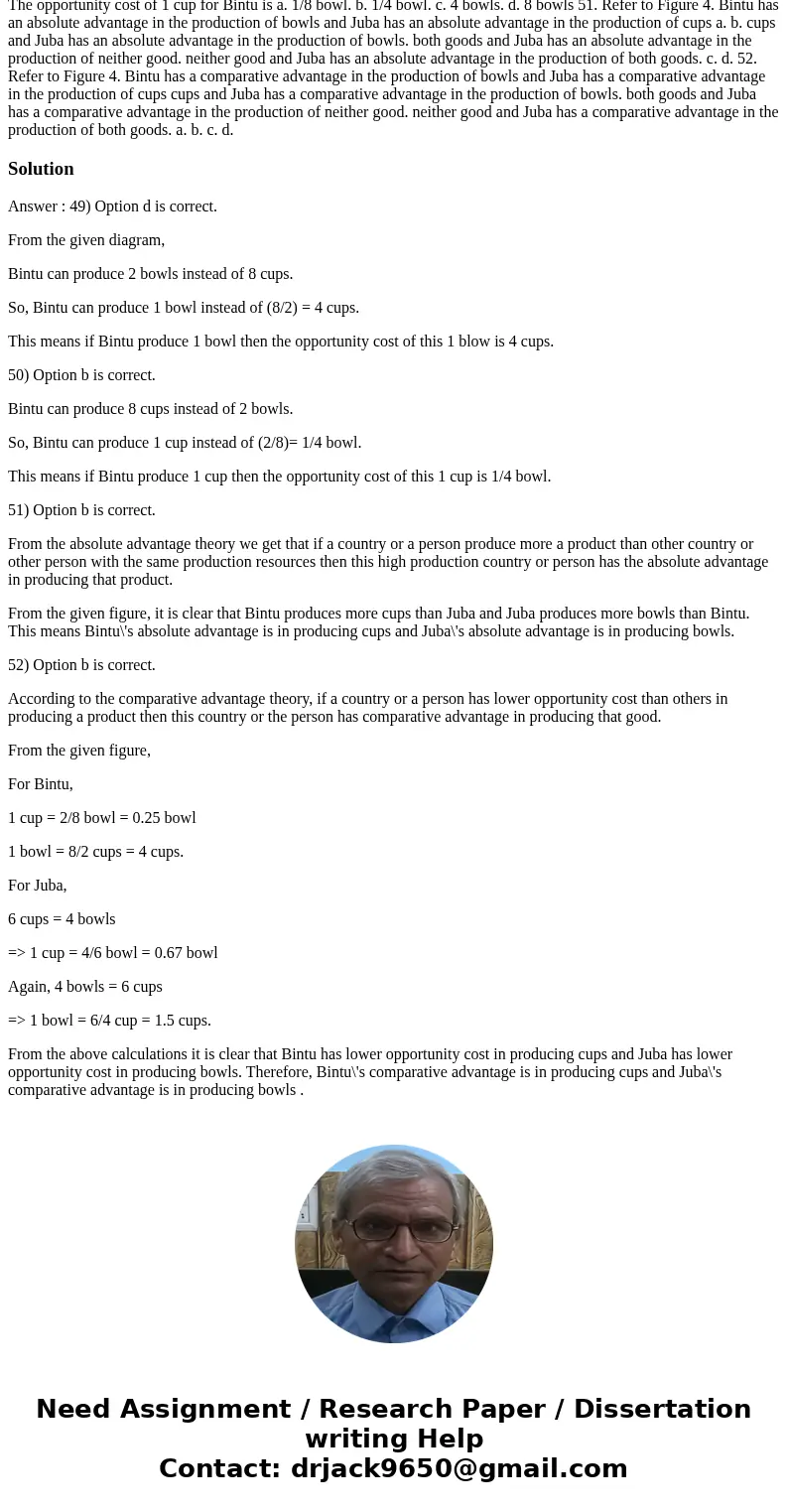Figure4 Bintus Production Possibilities FrontierJubas Produc
Solution
Answer : 49) Option d is correct.
From the given diagram,
Bintu can produce 2 bowls instead of 8 cups.
So, Bintu can produce 1 bowl instead of (8/2) = 4 cups.
This means if Bintu produce 1 bowl then the opportunity cost of this 1 blow is 4 cups.
50) Option b is correct.
Bintu can produce 8 cups instead of 2 bowls.
So, Bintu can produce 1 cup instead of (2/8)= 1/4 bowl.
This means if Bintu produce 1 cup then the opportunity cost of this 1 cup is 1/4 bowl.
51) Option b is correct.
From the absolute advantage theory we get that if a country or a person produce more a product than other country or other person with the same production resources then this high production country or person has the absolute advantage in producing that product.
From the given figure, it is clear that Bintu produces more cups than Juba and Juba produces more bowls than Bintu. This means Bintu\'s absolute advantage is in producing cups and Juba\'s absolute advantage is in producing bowls.
52) Option b is correct.
According to the comparative advantage theory, if a country or a person has lower opportunity cost than others in producing a product then this country or the person has comparative advantage in producing that good.
From the given figure,
For Bintu,
1 cup = 2/8 bowl = 0.25 bowl
1 bowl = 8/2 cups = 4 cups.
For Juba,
6 cups = 4 bowls
=> 1 cup = 4/6 bowl = 0.67 bowl
Again, 4 bowls = 6 cups
=> 1 bowl = 6/4 cup = 1.5 cups.
From the above calculations it is clear that Bintu has lower opportunity cost in producing cups and Juba has lower opportunity cost in producing bowls. Therefore, Bintu\'s comparative advantage is in producing cups and Juba\'s comparative advantage is in producing bowls .


 Homework Sourse
Homework Sourse